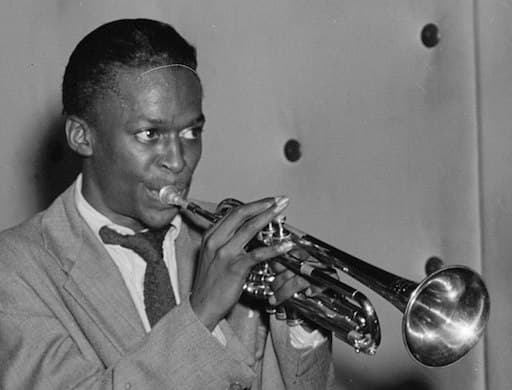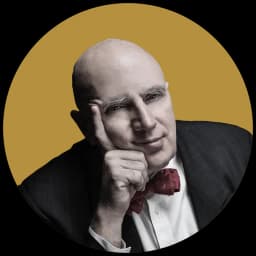Gil Evans and Miles Davis Never Imagined Their Classic Albums Being Performed This Way
Who would have dreamed that works conceived only as recordings would become some of the greatest live music experiences available?

‘Sketches of Spain,’ livestreaming on August 19 at 10:30 p.m. EDT, with guest soloist Sarah Caswell. https://flymachine.com/events/170125560
Miles Davis’s 1959 album “Kind of Blue,” widely considered the greatest jazz album of all time, is more than just critically acclaimed and a milestone in music history: It’s commercially successful, selling millions upon millions of copies over the last 60 years. While I can’t deny that it is, indeed, a masterpiece of the highest magnitude, I would say I’ve listened to the three albums Davis made in collaboration with arranger-composer Gil Evans — “Miles Ahead” (1957), “Porgy and Bess” (1959), and “Sketches of Spain” (1959) — many more times. In fact, I’ve given each of them at least several dozen plays for every single time I’ve sat down with “Kind of Blue.”
This week, the conductor, historian, and scholar Ryan Truesdale presents his ongoing Gil Evans project at Birdland, playing all three of these masterpieces, the last of which, “Sketches of Spain,” regarded by many as the greatest, will be livestreamed on August 19.
Sixty-five years ago, these projects were all made possible by new technology: the long-playing LP medium and the improved recording quality that came with magnetic tape, hi-fidelity, and stereophonic sound. For the first time, a few forward-looking jazz and popular artists — not only Evans and Davis, but Duke Ellington and Frank Sinatra — began to realize that the album format was an entirely separate medium from live performance.
Ellington composed full-length jazz “suites” and made albums out of them, but only rarely performed the entire works in public. Sinatra sang many of the individual arrangements (usually by the great Nelson Riddle) from masterpieces like “In The Wee Small Hours” and “Songs For Swingin’ Lovers,” but never performed the albums in toto.
The trumpeter and the arranger/composer were well aware that they were making that giant step of creating music in the studio for the express purpose of an album project that would probably never be heard in concert. By 1957, only a few of the most important big bands could afford to stay on the road — Ellington, Count Basie, Woody Herman — and there was no talk of Miles touring with a 20-piece orchestra.
At that point, there was little infrastructure to support such an ensemble on the road; only the bigger cities had large jazz venues, and jazz festivals were still a new platform. The veteran bandleaders made ends meet by playing ballrooms and dances — clearly, “Sketches of Spain” was not made for that. In this, they were setting the precedent for the Beatles and Glenn Gould, who, 10 years later, would also concentrate on creating music expressly for recording, music that they had no intentions of playing in public.
Yet somehow those three masterworks have become some of the best jazz formal concert music that there is. One would go so far as to say you haven’t really heard these works unless you’ve heard them live: There are incredible nuances and details that you miss just listening to the audio. Sadly, you can’t hear them with the soloist that they were intended for — MIles Davis — but they work surprisingly well with other outstanding soloists, even on instruments beyond trumpet and flugelhorn.
Trumpeters Jon Faddis, with the Carnegie Hall Jazz Orchestra, Clark Terry, with the Chicago Jazz Orchestra, and Ingrid Jensen, with the Scottish National Jazz Orchestra, have performed these works, and so too has saxophonist Dave Liebman, with the Manhattan School of Music Orchestra.
It’s hardly enough, which is why Mr. Truesdale and Birdland are devoting five nights, each with a different soloist, to the three works.
On Wednesday, saxophone virtuoso Steve Wilson essayed “Porgy and Bess,” playing the B flat soprano, the same horn that Mr. Liebman had used. This was at least the third time I’ve heard it live, each with a different soloist, after hearing both the original album and the “alternate” album (constructed out of unused takes from the 1958 recording sessions) several hundred times.
Somehow Evans and Davis combined all the different creative models of music-making — composition, arrangement, interpretation, improvisation — into a single process. Their work is based on the bones of the opera but is clearly an original entity unto itself, one that includes some of the “greatest hits” from the score: the familiar show tunes like “Bess, You Is My Woman Now” and the concluding “There’s a Boat That’s Leaving Soon for New York.” Evans and Davis also stress those other, less-well known songs inspired by African American folk and gospel music traditions, like the opening “Buzzard Song,” and the street vendor cries. Suddenly a guy selling honey to the denizens of Catfish Row is transformed into a highly erotic mating call.
The second part of the Evans version is a radical repurposing of the funeral music from Act 1, Scene 2. Evans and Davis essentially reconstruct it into two sections, titled “Gone” and “Gone, Gone, Gone” — the first is an exuberant uptempo spotlighting the drummer (Philly Joe Jones on the original, the mighty Lewis Nash at Birdland), and the second is more pertinent to the song’s role in the narrative, being some of the most indescribably mournful playing that the jazz legend ever did.
Mr. Truesdale, who has been exhuming, reconstructing, and performing this music for almost a dozen years with his Gil Evans Project, points out that this treatment of “I Loves You Porgy” is a true precedent to “Kind of Blue” in the way it recasts the familiar Gershwin tune using modal harmonies rather than standard Western chord changes.
About the only thing left to do with the Davis-Evans “Porgy and Bess” is to expand it, orchestrating some of the parts of the three-hour opera that were not on the 50-minute LP, such as “I Got Plenty o’ Nuttin.’ David Berger created a precedent for this when he took the Duke Ellington adaptation of Tchaikovsky’s “Nutcracker” and expanded it to include more of the ballet, for it to be performed as a full-length work titled “The Harlem Nutcracker.”
I could go on and on extolling the virtues of these three works, and the Davis/Evans “P&B” in particular. It is a miraculous work unto itself, worthy of standing side-by-side with the original opera as the Gershwins and Heyward wrote it. Who would have dreamed that works conceived only as recordings would become some of the greatest live music experiences available?

